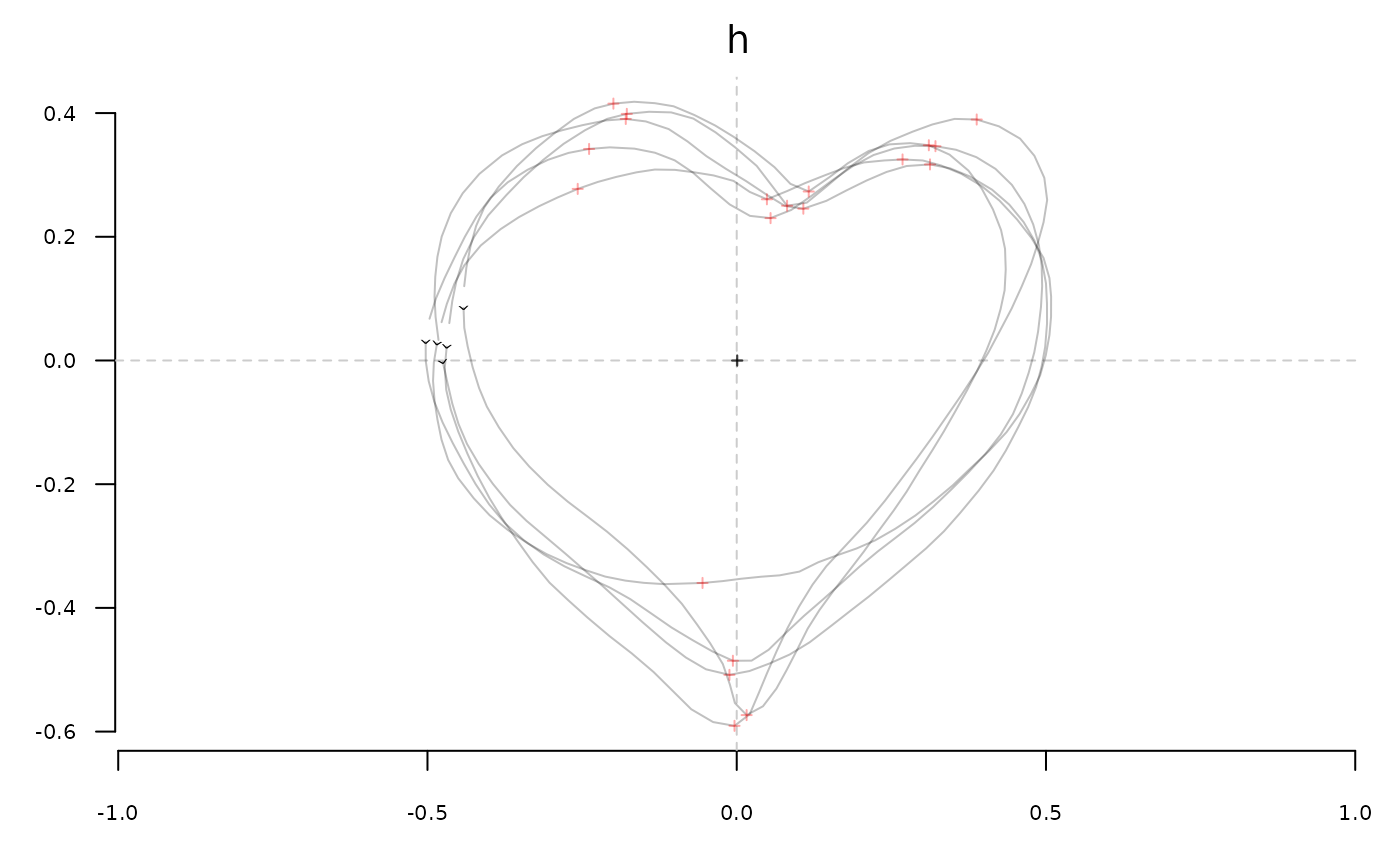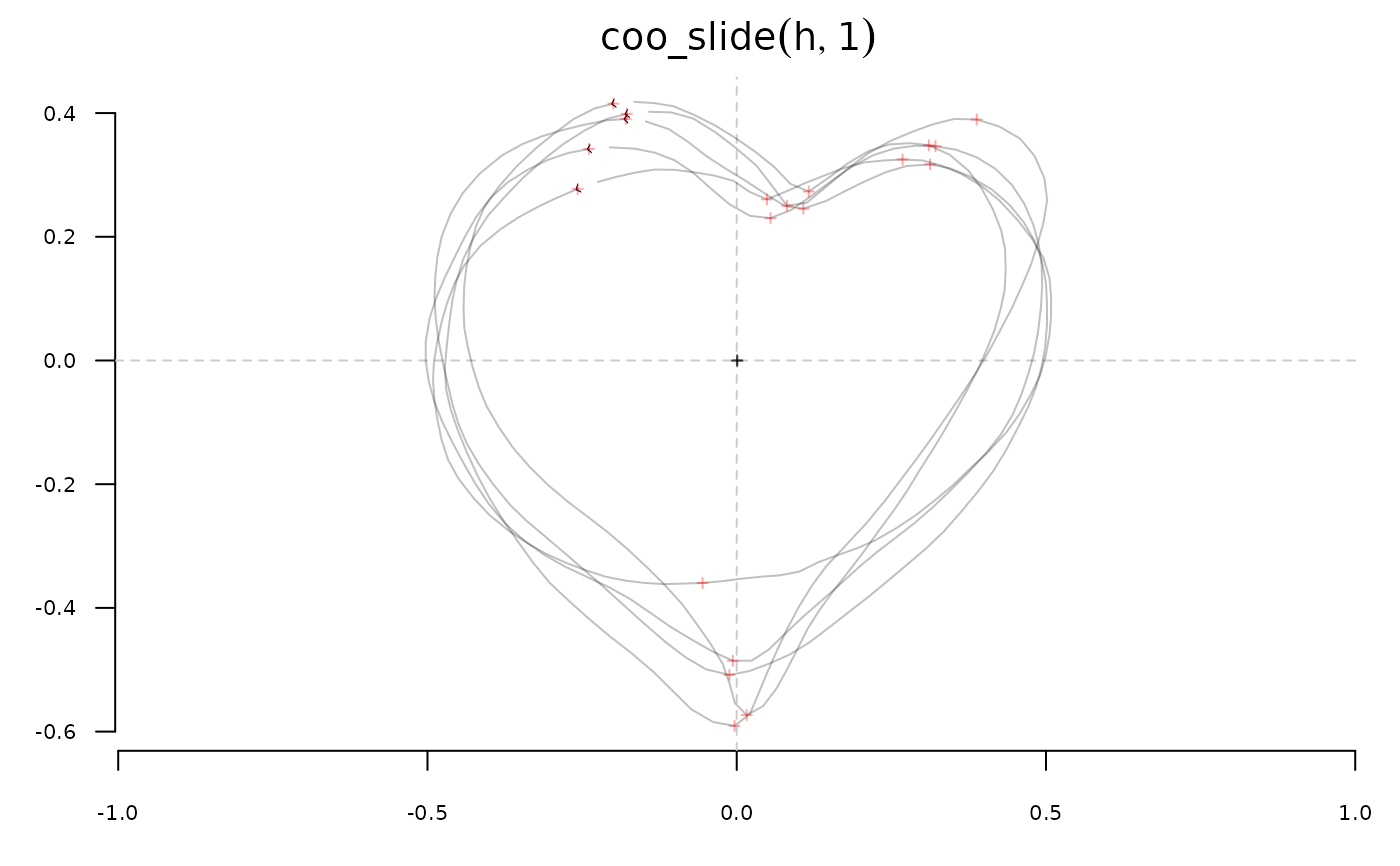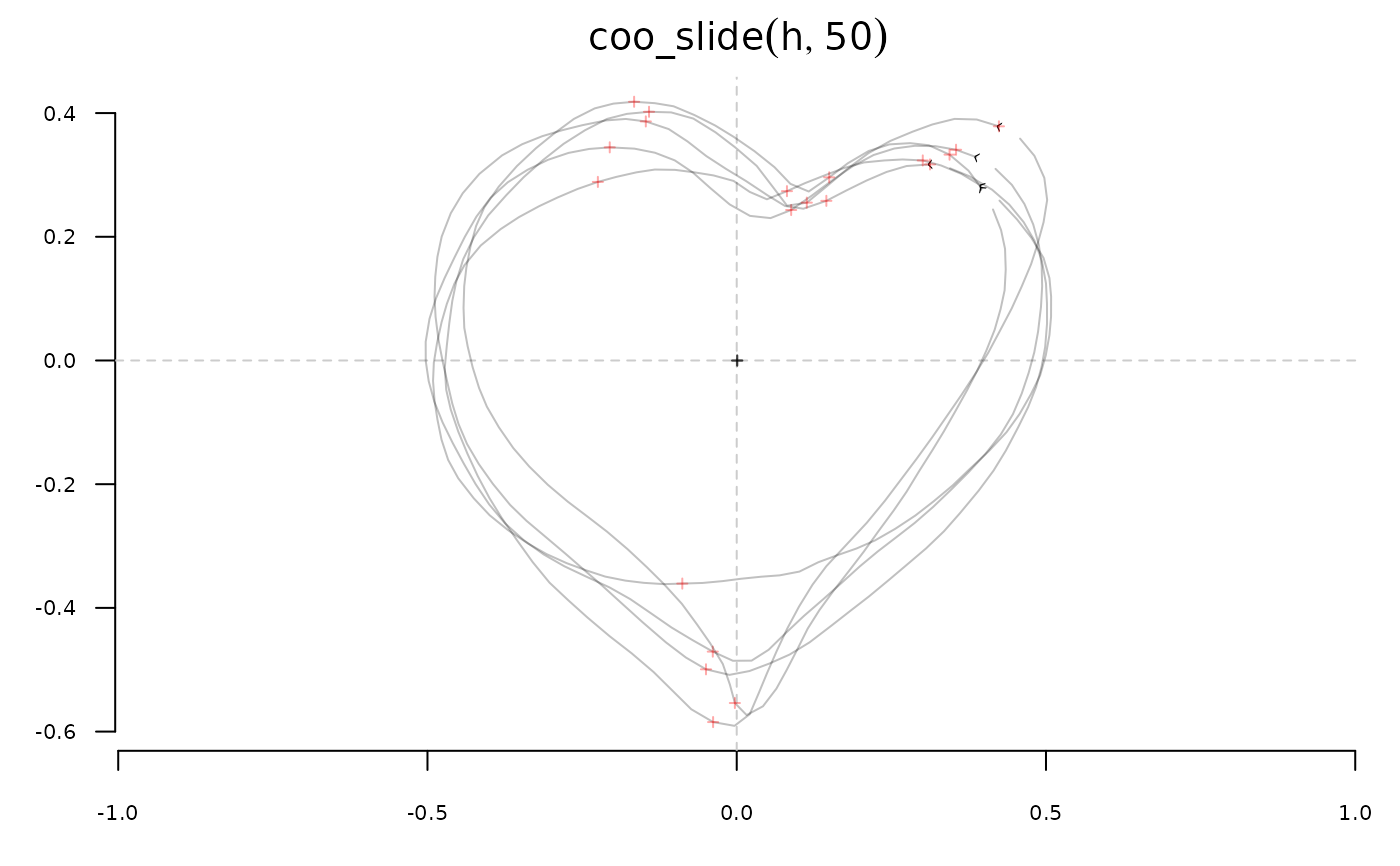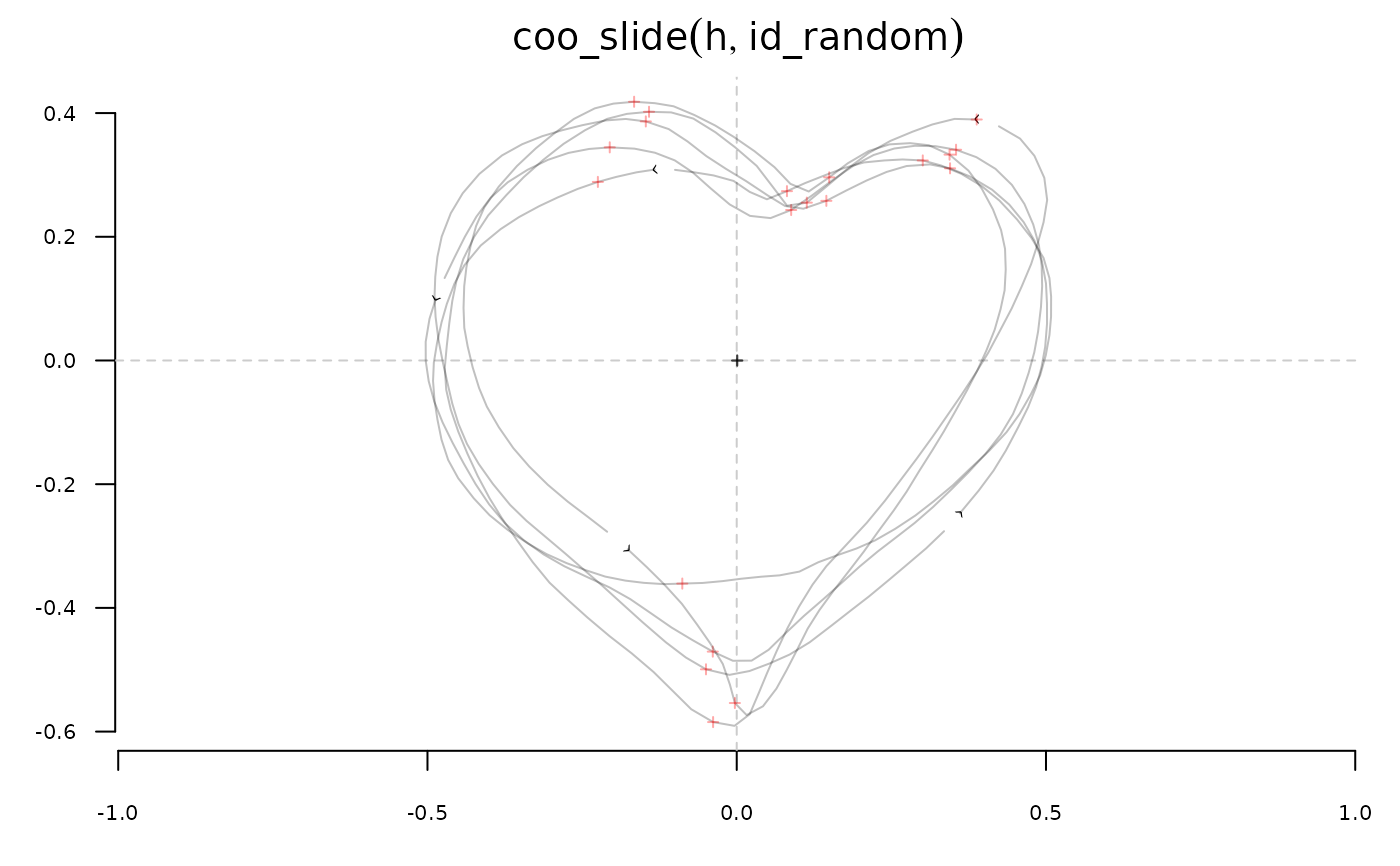Slides the coordinates so that the id-th point become the first one.
Arguments
- coo
matrixof(x; y)coordinates or any Coo object.- id
numericthe id of the point that will become the new first point. See details below for the method on Coo objects.- ldk
numericthe id of the ldk to use as id, only onOut
Value
a matrix of (x; y) coordinates, or a Coo object.
Details
For Coo objects, and in particular for Out and Opn three different ways of coo_sliding are available:
no ldk passed and a single id is passed: all id-th points within the shapes will become the first points. $ldk will be slided accordingly.
no ldk passed and a vector of ids matching the length of the Coo: for every shape, the id-th point will be used as the id-th point. $ldk will be slided accordingly.
a single ldk is passed: the ldk-th ldk will be used to slide every shape. If an id is (also) passed, it is ignored with a message.
See examples.
See also
coo_slice and friends.
Other sliding functions:
coo_slidedirection(),
coo_slidegap()
Other coo_ utilities:
coo_aligncalliper(),
coo_alignminradius(),
coo_alignxax(),
coo_align(),
coo_baseline(),
coo_bookstein(),
coo_boundingbox(),
coo_calliper(),
coo_centdist(),
coo_center(),
coo_centpos(),
coo_close(),
coo_down(),
coo_dxy(),
coo_extract(),
coo_flipx(),
coo_force2close(),
coo_interpolate(),
coo_is_closed(),
coo_jitter(),
coo_left(),
coo_likely_clockwise(),
coo_nb(),
coo_perim(),
coo_range(),
coo_rev(),
coo_right(),
coo_rotatecenter(),
coo_rotate(),
coo_sample_prop(),
coo_samplerr(),
coo_sample(),
coo_scale(),
coo_shearx(),
coo_slice(),
coo_slidedirection(),
coo_slidegap(),
coo_smoothcurve(),
coo_smooth(),
coo_template(),
coo_trans(),
coo_trimbottom(),
coo_trimtop(),
coo_trim(),
coo_untiltx(),
coo_up(),
is_equallyspacedradii()
Examples
h <- hearts %>% slice(1:5) # for speed sake
stack(h)
 # set the first landmark as the starting point
stack(coo_slide(h, ldk=1))
# set the first landmark as the starting point
stack(coo_slide(h, ldk=1))
 # set the 50th point as the starting point (everywhere)
stack(coo_slide(h, id=50))
# set the 50th point as the starting point (everywhere)
stack(coo_slide(h, id=50))
 # set the id-random-th point as the starting point (everywhere)
set.seed(123) # just for the reproducibility
id_random <- sample(x=min(sapply(h$coo, nrow)), size=length(h),
replace=TRUE)
stack(coo_slide(h, id=id_random))
# set the id-random-th point as the starting point (everywhere)
set.seed(123) # just for the reproducibility
id_random <- sample(x=min(sapply(h$coo, nrow)), size=length(h),
replace=TRUE)
stack(coo_slide(h, id=id_random))
